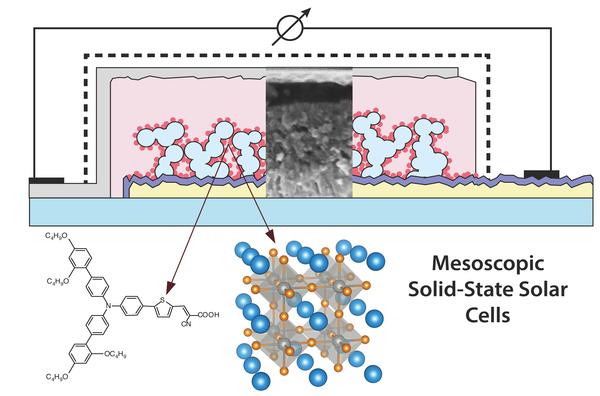Asea Brown Boveri Ltd. (ABB) Award 2015 – Amalie Dualeh

© 2015 EPFL
Analysis of Key Electronic, Optical and Structural Parameters in Mesoscopic Solid-State Solar Cells, EPFL thesis n°6238 (2014).
Thesis Director: Prof. M. Graetzel, Dr. M. K. Nazeeruddin.
“For her efforts in understanding the inherent complexity and thermal behaviour of high efficiency perovskite and mesoscopic solar cells, the device mechanisms and interface interaction phenomena using different molecular sensitizers and hole transporting materials.”
The work presented in this thesis investigates the operating processes of solid-state mesoscopic solar cells employing the organic p-type semiconductor spiro-MeOTAD as hole-transport material in combination with either molecular dyes or the hybrid organic-inorganic lead-iodide based perovskite as light harvesting material. The inherent complexity of the system and the interplay between the many different components signifies that in many ways the device operating mechanisms are still poorly and/or not fully understood. Using impedance spectroscopy the internal electrical processes occurring in this system are examined, differentiating and evaluating the contributions from the individual components and interfaces. These studies identify separate features corresponding to the electronic and ionic conductivities of the perovskite material. These features are heavily dependent on the nature, crystallinity and morphology of the perovskite material which define its transport and electrical properties.
The thermal properties and behavior of CH3NH3PbI3 perovskite and its individual components are scrutinized providing valuable insight into the stability of the material.
The comprehensive studies presented here examine the key parameters governing the device mechanisms of solid-state mesoscopic cells. The knowledge and insight gained on the operating processes and interfaces provide a valuable contribution to the improvement and development of high performance solar cells.
